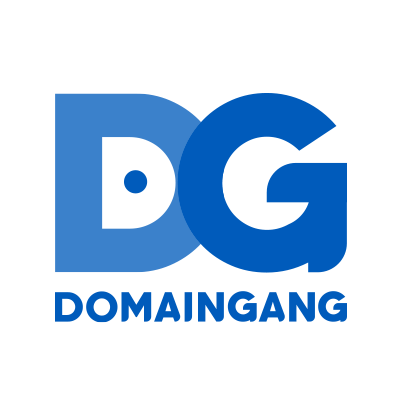YOUR AD HERE
The Internet was in less than 5% of homes when visionary Gary Kremen registered jobs.com, housing.com, autos.com, sex.com and about two dozen other valuable domain names. For free! The story is relayed in David Kushner’s superb book The Players Ball. The main focus of the book is the decade plus legal battle over ownership of the sex.com domain name.
Gary Kremen caught a domain train, seeing a demand before others. There have been numerous cases of trains that domain investors caught at an opportune time, such as the realization that exact match names had high worth, the early stages of extensions such as .io, and being among the first to see the value in developing technologies, service niches, or branding trends, among other possibilities.
Because money can definitely be made by catching trends in early stages, this can create a fear of missing out. That fear may cause investors to sink too much into speculative domain investments, sometimes leading to train wrecks of financial ruin. Certainly many investors rode the .mobi investment wave to a train wreck of major proportions.
In this article I look at catching speculative trains, and share a few suggestions on how to possibly avoid domain name investing train wrecks.
There Is No Sure Thing
This is obvious, but needs to be said: in the world of domain investing there really is no sure thing. Certainly domains of some types are more likely to sell at good prices, but there is no absolute guarantee that you will be able to sell any individual domain name for more than your acquisition and holding costs. The one exception would be if you are very fortunate in finding a seriously under-priced domain name in a highly liquid category, such as common dictionary word .com domain names.
The Early Rider Gets The Reward
Some say do not purchase domain names in anything that does not already have a significant sales record. While understanding that logic, if you apply it rigorously you will miss opportunities. The era of getting great .com domain names at low prices was in the mid-to-late 1990’s, and once their worth was established, the available name pool became much more sparse and expensive.
There were similar eras in general purpose country-code names and in some new domain extensions. In general, you need to be in early to secure the premium names at reasonable costs. However, at that early stage you have no firm idea how well the extension will do. Your investment is therefore risky.
Risk And Reward Are Related
In conventional investing, investments that carry higher levels of risk, generally speaking, have higher potential rewards, although the probability of getting those rewards are lower. Some would argue that the same principle holds in domain investing, with higher return/cost ratios possible in some more speculative investments, although the contrary view can also be argued.
Where Is This Train Going?
While none of us can precisely predict the future, that does not mean that there is not available information to help us evaluate the speculative risk. In the case of investing in an extension, you might consider questions like these.
- Who runs the extension, and how stable are they?
- What end use is already active?
- If a repurposed country code, are there any political storm clouds on the horizon?
- What are the main competitors for this domain investment?
- Based on early sales, what is the approximate sell-through rate and typical sales prices?
- Is familiarity with the extension growing significantly?
- In what sectors and regions does the extension find use?
- Is there a trend of startups using this extension or type of name?
Do your research before you make a decision to invest.
Who Is Already On This Train?
To me, one of the most important questions is who is already using this extension or type of domain name. One can use the Google site: command to find existing websites. For example a search on site:.vc will produce a list of websites on .vc extension domain names.
Use sources such as NameStat.org and DomainNameStats.com to look at details such as number of registrations, number and ratio of sites in Alexa 1M, etc. I am personally cautious if almost all of those holding domain names in an extension are domain investors.
The tools offered by CENTR provide information on trends in registrations, deletions, renewals, CISCO global use ranking, etc., along with benchmark comparison data.
Dofo offers an easy tool for investigating any extension. Just enter https://dofo.com/extensions/TLD where TLD is replaced with whatever extension you wish to investigate. You can also use their Extensions tab to access the same data. The Dofo site shows the number of domains registered and actively listed for sale, a selection of popular websites, and registration breakdown by country and registrar.
Don’t Try To Catch Every Train
After a major sale is announced, it is tempting to rush in and try to benefit from registrations of similar names. Remember, though, that one big sale may simply be an outlier.
Even beyond that, no one should try to catch every domain investment train, every hot niche, hot extension, new branding trend etc.
Be selective in any speculation, and try to keep fear of missing out in control. There are millions of ways to make money in domain investing, and unfortunately even more ways to lose money. While catching domain investment trains can, for some, be part of your investment strategy, it should not be your entire strategy.
Do We Know Where This Train Is Going?
One reason that the early registrations and acquisitions by Gary Kremen were so smart is that he had in mind a clear plan of how those domain names would be used. At the time, much of advertising money was in newspaper classified ads, and he saw these moving to the Internet. Therefore names like autos.com and housing.com would have high worth. With the introduction of Internet image file formats, he saw that a web-based dating platform could be much more powerful than the newspaper personals, phone lines, and text bulletin board systems of the time. He therefore secured and developed Match.com.
When you consider speculative acquisitions, ask yourself is there a clear plan on how the domain names could be effectively used?
Is This Train For Me?
Not every speculative domain investment is right for every domain investor. Your prospects are best when you invest in what you know. When considering any speculative investment, ask if you have special expertise in selecting and promoting the names.
When The Train Is Gone…
If the train has already left, don’t register lower quality leftover domain names. Oldtimer covered this well in a recent post.
There is a very small window of opportunity for registering domains in an extension that already has very limited viable domains to offer, and once the first tier domains that make sense for that extension are all registered it is not wise to go after any second or third tier domains unless that extension becomes very popular, but even then it's important not to forget that some extensions have a very narrow use as far as the Industry and category that they are targeting.
Avoiding Train Wrecks
One way to avoid domain name train wrecks is to never invest in anything speculative. That may not optimize your probable return, however.
Another way to avoid a train wreck, while accepting that some investments will not work out, is to limit how much you invest in highly speculative domain investments. In other words, invest only what you can comfortably afford to potentially lose. Financial advisors always stress knowing, and living within, your risk tolerance. The same should apply to domain investment.
Not Everything On One Train
The more diversified is your portfolio, the less you are tied to any one risk. Don’t bet your entire domain prospects on any one type of domain, whether that is a series of .com domain names all with very similar keywords, or one narrow technology sector, or a single alternative extension. Those with large portfolios have the added benefit of averaging there risks over many individual domain names. This article covers domain portfolio diversification approaches.
A Little Checklist Before Boarding The Train
I have found the following personally helpful, and perhaps you will too. When I am tempted to invest in a new domain sector, such as a new technology trend, or an extension without a long sales record, I ask myself the following series of questions. I require a yes to all items to go ahead and board the speculative train.
- Am I sitting on any money that is available for domain investing right now? I personally try to only invest what I have made from domain names. I pass up some promotions or opportunities if they happen when I have no extra funds. Don’t speculate with money you will need for other purposes.
- Have I researched this opportunity? Have I really put the hours into looking at the relevant statistics and type of names that have sold so far?
- Have I also put the effort into finding the best possible names?
- Am I the right person to invest in this? This is related to the point above that not every train is right for every person. Can you justify to your accountability partner why you are investing in this sector or extension?
- Is now the right time? The timing might be related to cost-of-ownership opportunities, like promotions, but also is there still a good pool of quality names available, or have I missed this train?
- If I reasonably estimate costs, likely return and probability of sale does it make quantitative sense? This is the hardest to estimate, but important. Promotions may tip the argument making a one year trial on some domain names worthwhile. For example if I estimate the annual selling probability at 1% for a particular domain name, and the likely net return after costs at $1500, then paying $15 for one year is the breakeven point. If one year of registration has dropped from $40 to $5, the odds now favour making a speculative investment, whereas they did not previously.
So If I answer yes to all six points, I next set a maximum total amount that I feel comfortably investing, and stick to it. The discipline of setting a limit helps emphasize quality, by making the best choices with limited money.
Final Thoughts
You might wonder why I did not include Match.com in the list of free domain registrations picked up by Gary Kremen. It is because that was not a free registration; he paid $2500 to purchase it from the initial owner. That was a huge amount in 1994, particularly for someone carrying $50,000 in student loans at the time. Unfortunately his net return on Match.com was modest compared to the much higher price the site sold at a few years later.
You can read more of the story of Gary Kremen’s domain acquisitions in The Players Ball or in a story written in 2006 by Ron Jackson in DNJournal, as well as many other online stories. For those attending the forthcoming NamesCon 2020 virtual event, author David Kushner is one of the speakers.
While neither this post, nor a recent article posted to NamePros by Ategy, are about any particular extension, I urge you to read his caution about speculative domain investments.
I would love to hear thoughts from readers on the degree to which they try to get in early on domain trends, and how they personally minimize the chance of train wrecks.
May you catch the occasional profitable train, and avoid major train wrecks in your domain name investing career!
This article was in preparation for more than a year, starting when I first read The Players Ball. However, the title was inspired by this recent NamePros post by Oldtimer that mentioned missing domain trains. The instant I read it, I realized that domain trains and avoiding train wrecks was exactly the framework I had sought. Thank you.
 1 year ago
30
1 year ago
30






 English (US) ·
English (US) ·